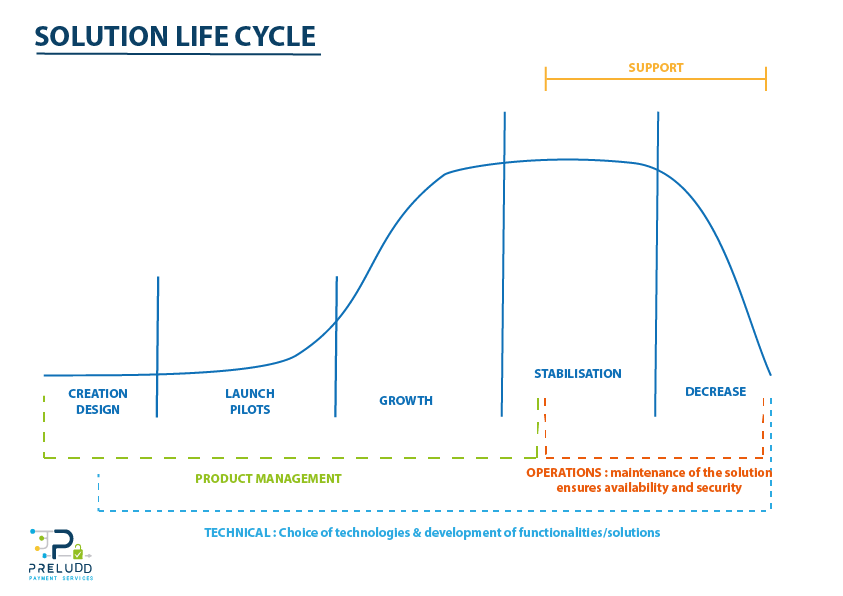At the beginning of February, Muriel Serres joined Preludd Payment Services as Chief Products & Solutions Officer. She completes the Product Management Department in a key position in the company. This piece of news is an opportunity to talk about a subject that I consider important in the strategic vision of SaaS (Software as a Service) companies : the product strategy in fintechs.
In older SaaS structures
In older SaaS structures, the Development Department was in charge of both the design (Product Management) and the development of the solution. The Technical Department was in charge of the maintenance and proper functioning of the solutions, maintaining stability, availability, as well as high security, with very few breakdowns. This required touching the solution in place as little as possible, but you cannot innovate and develop a solution without creating instability.
The collaborative model between these two services did not exist or was not very present. This created instabilities in decision-making and fostered conflicts when creating a new product feature or a new solution.
In fintechs dating back less than ten years
In fintechs dating back less than ten years, the impact of the use of agile development methods has radiated over part of the company’s organization. The so-called support services, such as Human Resources or Finance, remain unchanged. On the other hand, the departments most impacted and which have been the most influenced by agile methods are the so-called technical departments, responsible for software design.
One of the objectives of these agile methods is to create cohesion and strengthen collaboration within the various departments of the company, to defuse possible conflicts and to optimise productivity.
What is essential, to guarantee the success of a company in SaaS, is to have a transversal function and to know how to distribute the roles of each service, according to the needs of the company and its positioning.
However, in my opinion, it is not up to the CEO to be the link between the Technical Department and the Development Department. The CEO must devote his time to the operation of the company, put in place what is necessary, develop the strategy and the long-term vision of the company. The role of a ship’s captain is not to hold the helm, but to ensure that the boat is working properly and put in place strategies to guarantee its safe arrival.
The role of the leader must therefore remain centered on strategy. Unfortunately, this creates a void within the company between the Technical and Development Departments. You should know that the Technical Department does not have the same role in older companies as it does in Preludd.
The management committee is made up of a Technical Director who is in charge of the software development of the solutions and an Operations Director who ensures the good stability and availability of the solution.
The creation of a service dedicated to Solutions and Products, positioned at the same level as the Technical and Operations Departments, is obvious. The objective is to bring together this link and this collaborative process in the creation, production and maintenance of solutions, so this is the role of Product Management.
The Product strategy and the role of the Product Management
The role of the Product Management department is to create products and solutions and follow their life cycle, until a smooth handover of the solution to the Operations department.
A software solution is managed like a product with different phases:
- Reflection/creation phase
- Conception phase
- Launch phase
- Growth stage
- Maintenance phase, plateau
- Decreasing phase

The diagram above illustrates perfectly, in my opinion, the scope of execution of Product Management in the life cycle of solutions. It is involved in the creation/design, launch (in particular with the setting up of pilots), growth and, finally, part of the maintenance phase (which is represented by a plateau on the curve).
Once all the improvements have been thought out and brought to a solution and that the subject has been covered, it is the role of the Operations department to intervene to maintain the stability, the availability, as well as the security of the solution. There is no longer any need for the « touch » of the Product Management service. It is important to define where the added value of this service is.
What I’m trying to highlight through this article is that it’s not about handing a hot potato to another department but rather about creating a smooth transition on who should make decisions and at what point in the lifecycle of the solution.
The choice to include a Products and Solutions Director in the Preludd Management Committee was made so that the Products and Solutions Department is at the same level as the Technical (CTO) and Operations Directors and, therefore, bring balance and stability in decision making.
The distribution of roles is thus clearer and promotes good understanding and innovation of the company’s solutions and products.
Hence the title of this article “The Golden Triangle of Product Success in Fintechs”: it takes the three departments of Product Management, Technical and Operations so that the entire company system can function and be stable in the long term.
Thus, the leader will have the role of driving the idea and it will be up to the directors to write the story.
It is important not to create filters or barriers and to choose the right person who has this innovative fibre and who is also product-oriented
Muriel was the perfect choice to take on this role!
The debate is open to comment 😉
